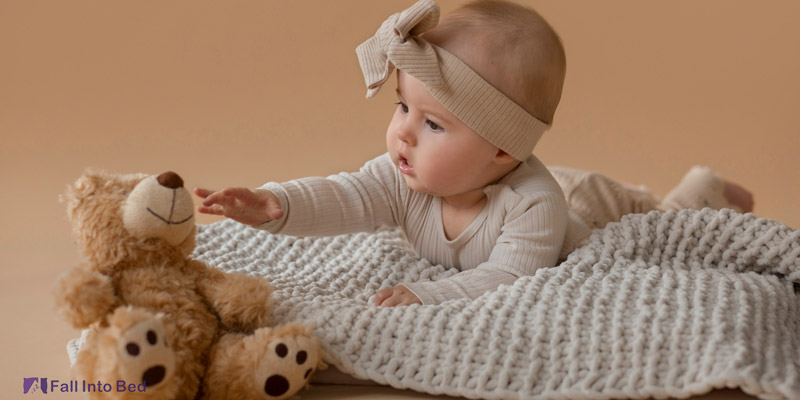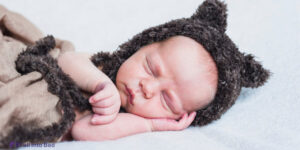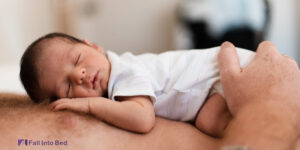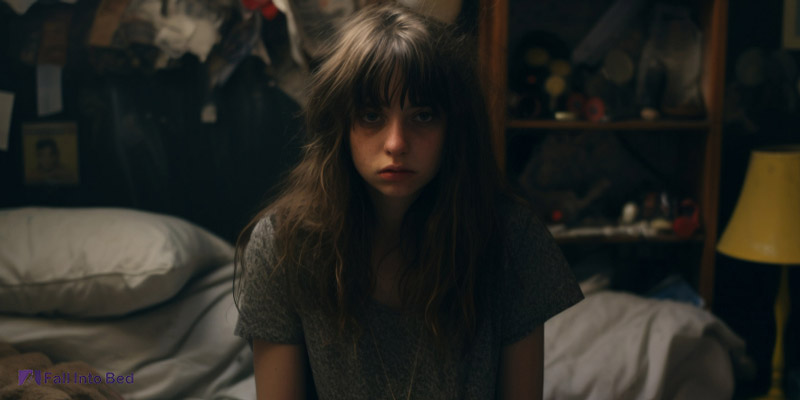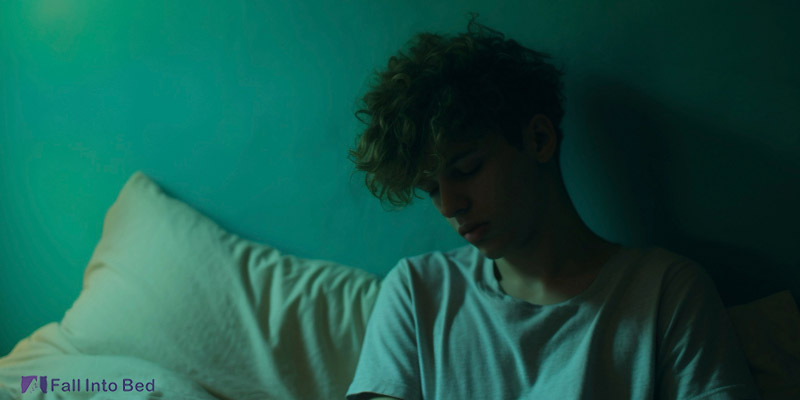Babies love their stuffed animals. To the point where they always want them around, even when they’re about to sleep. However, there are some risk factors parents need to be aware of when they give their little ones, a new stuffed animal. Not all children can sleep with stuffed animals alone. In this article, we’re going to talk about when a baby can sleep with a stuffed animal and the potential perks and risks of having them in the crib. So stay tuned with us.
When Can a Baby Sleep With Stuffed Animals Safely?
Typically, whether your baby can sleep with a stuffed animal or not, depends a lot on their age. If your little one is older than 12 months, sleeping near stuffed animals is not only not harmful but also with a few benefits.
However, if your baby is under 12 months, sleeping near stuffed animals is not a very good idea for them. And there are some risks in it as well.
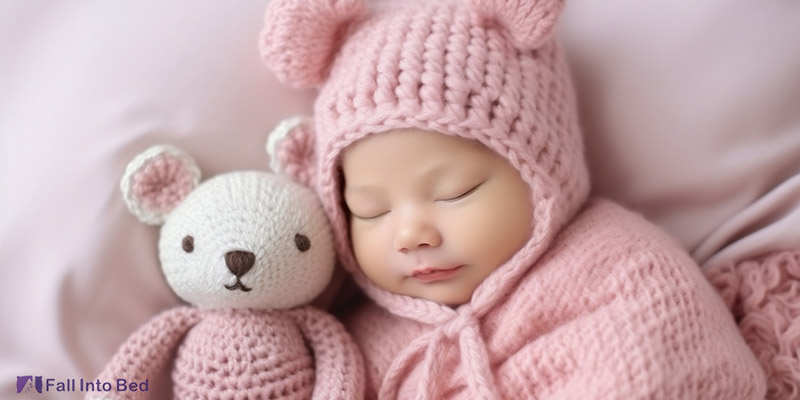
What are the benefits of a baby sleeping with stuffed animals?
As we mentioned, babies that are 12 months or older, can comfortably sleep with their stuffed animal in their crib. Some of the perks of this action are as follows:
A sense of security
Having a fluffy little thing to cuddle with can be very comforting for your baby. Sleeping with a stuffed animal can help them feel accompanied, and deal with their separation anxiety better. This is especially good for babies who have gotten used to only sleeping in their caregiver’s arms to avoid the anxiety. This can also encourage them to sleep in their own crib.
The toy becomes a comforting object that provides emotional support, helping the baby to relax and feel more at ease while falling asleep. Over time, this sense of comfort can contribute to better sleep quality and a stronger feeling of emotional security.
Improve sleep quality
Stuffed animals help kids sleep better because they make them feel safe and cozy. When a child holds their stuffed animal, it can make them feel less scared or worried, which helps them relax.
This comfort makes it easier for them to fall asleep and stay asleep longer. Having their stuffed toy nearby also creates a bedtime routine that helps them sleep more peacefully each night.
Using stuffed animal can also be helpful when you want to put your baby to sleep. There are also some techniques you can use to put your baby to sleep in less than a minute.

Increase in cognitive development
A plush toy can increase your baby’s cognitive development and improve developmental milestones by encouraging imaginative play and emotional expression. When children interact with their stuffed animals, they often create stories, conversations, or even pretend scenarios, which helps boost their creativity and problem-solving skills.
On the other hands, experiencing various shapes, materials, colors and sounds through touching, hugging and biting on the stuffed animals can increase the sensory motor development in your little one.
Routine and Consistency
Introducing a special stuffed animal when your baby wants to go to sleep can have a great benefit for your kid and you as a parent. Children can become conditioned to feel safe and relaxed when they have their stuffed animal with them. This routine creates an association between the stuffed animal and comfort, which helps signal to their brain that it’s time to wind down and sleep.
Over time, this consistent routine strengthens the feeling of security and makes it easier for them to fall asleep and stay asleep, almost like a comforting habit.
What are the potential risks of babies sleeping with stuffed animals?
While stuffed animals can provide comfort, there are a few risks and disadvantages to consider when babies sleep with them, especially for infants younger than 12 months:
SIDS
The presence of stuffed animals in the crib is linked to an increased risk of Sudden Infant Death Syndrome (SIDS). Experts recommend keeping the crib free of any soft objects, including stuffed animals, until the baby is at least one year old and the risk of SIDS is gone.
You can read more about SIDS and proper sleeping positions for babies here.
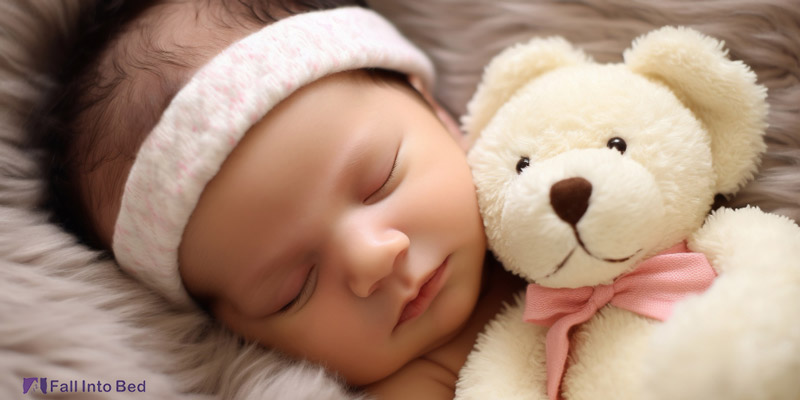
Allergic reactions
Stuffed animals can collect dust, allergens, or pet dander, which may trigger allergies or respiratory issues, especially if the toy isn’t regularly cleaned.
For children with asthma or allergies, the presence of these allergens in their sleeping area can worsen their symptoms, leading to problems like sneezing, coughing, runny nose, or difficulty breathing. To minimize these risks, it’s important to:
- Regularly Clean Stuffed Animals: Wash them according to the manufacturer’s instructions, which usually involves machine washing or spot cleaning.
- Choose Washable Toys: Opt for stuffed animals that can be easily cleaned and are machine washable.
- Keep Sleep Areas Dust-Free: Ensure that the baby’s sleep environment is clean and free of dust and allergens to reduce the overall allergen load.
Choking hazard
For babies under 12 months, having soft objects like stuffed animals in the crib increases the risk of suffocation or smothering, as the baby might roll onto the toy and have difficulty breathing.
The American Academy of Pediatrics (AAP), recommends keeping the crib free from any soft objects, including stuffed animals, pillows, blankets, and bumper pads, until the baby is at least one year old.
After the first year, when babies have more motor control and the risk of SIDS decreases significantly, you can introduce stuffed animals into their sleep environment.

How to choose the best stuffed animal for sleeping with a baby?
When choosing a stuffed animal for a baby over 1 year old, it’s crucial to prioritize safety while ensuring the toy is suitable for their age. Here are some guidelines to help you select an appropriate stuffed animal and understand how to minimize potential risks:
1. Opt for Safe Design Features
- Short Limbs and Neck: Choose stuffed animals with short legs and necks. Toys with long or loose parts can pose strangulation risks or become hazards if they fall off during play.
- Embroidery Over Small Parts: Select toys with embroidered eyes and features rather than plastic parts. Plastic eyes, ribbons, or bow ties can detach and become choking hazards.
2. Quality and Construction
Check for Durability: Ensure the stuffed animal is made from high-quality materials that can withstand regular play without losing parts.
Avoid Sharp Edges: The toy’s surface should be smooth and free from burrs or sharp edges that could harm your child.
3. Safety Standards
For Ages 1 to 3 Years:
- Parts and Small Objects: Ensure that detachable parts or objects cannot be fully inserted into a small test cylinder, as this could pose a choking risk.
- Material Safety: The filling should not contain any sharp or hazardous materials.
- Rope and String Safety: Any ropes or strings on the toy should be at least 1.5mm thick. And their free length should not exceed 220mm under a pulling force of 25N. Ropes should be tested to ensure they do not exceed 380mm in circumference when subjected to this force.
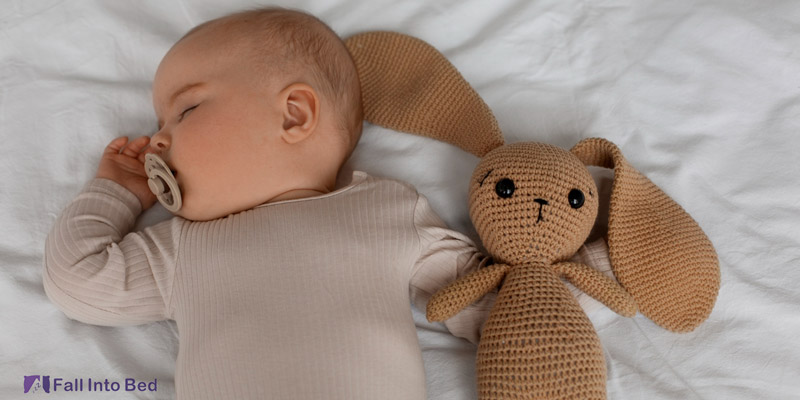
For Ages 3 Years and Older:
- Age Warnings: Toys not suitable for children under 3 years should have clear warnings, such as “Not suitable for children under 36 months,” along with specific hazards described.
- Compliance with Standards: Ensure the toy meets all relevant safety standards for its intended age group, such as those outlined by ASTM F963 (U.S.), the Toy Safety Directive (TSD) in Europe, and the CCPSA in Canada.
By following these guidelines, you can help ensure that the stuffed animal you choose for your child is both safe and enjoyable. Always check the latest safety regulations and standards to keep your child’s playtime both fun and secure.
Sweet fluffy dreams!🧸

